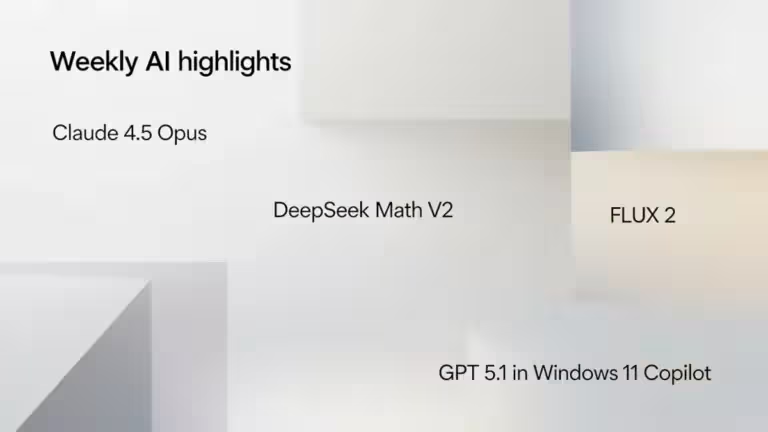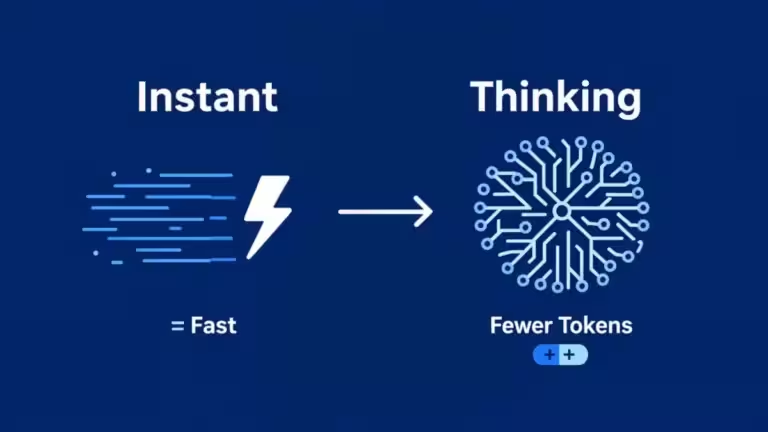Compare AI prompt management tools: open source and commercial solutions

The market for AI prompt management tools is booming. Between open source community frameworks, enterprise-grade commercial platforms, and general-purpose productivity apps repurposed for prompt engineering, it is increasingly complex to choose the right solution. If you are looking for the best tool to organize your AI prompt library, you will encounter dozens of names: PromptLayer, PromptHub, OpenPrompt, LangChain, Agenta, ChainForge, and more. Not to mention Notion, Obsidian, or VS Code, which many adapt for managing prompts..
How do you choose? Should you focus on a dedicated prompt engineering platform or adapt an editor you already know? Do you go with a free but limited tool or invest in a commercial solution? Should you bet on open source and community flexibility, or the stability and security of a supported product?
In this comprehensive comparison of AI prompt management tools, we review the major solutions available in 2025. You will find detailed comparison tables of features, analysis of pricing and business models, and above all, practical recommendations for different profiles: freelancers, small teams, developers, and enterprises. By the end of this article, you will have the insights you need to pick the tool that fits your needs and know exactly how to get started. If you are new to this topic, start with the reference guide: Organize AI prompts: complete guide to solutions in 2025.
Feature comparison: a complete market overview
The three main categories of AI prompt management tools
Before diving into details, let’s clarify the landscape. The best AI prompt tools fall into three distinct categories:
1. Dedicated prompt engineering platforms
Solutions specifically designed to manage, test, and deploy prompts at scale. They natively include version control, A/B testing, analytics, and team collaboration.
Examples: PromptLayer, PromptHub, OpenPrompt, Agenta
2. Frameworks and developer-oriented tools
Libraries and frameworks for developers building complex AI applications with workflows, agents, and chained prompts.
Examples: LangChain, PromptFlow, ChainForge, Latitude, VS Code
3. General-purpose tools adapted for AI prompts
Productivity apps such as note-taking or editors, adapted to organize prompts. They have no native AI features but remain simple and accessible.
Examples: Notion, Obsidian
Each category targets different needs. A startup will prefer category 2, a freelance marketer category 3, and a large enterprise category 1.
Feature comparison table
Here is a detailed comparison of AI prompt management tools by their main features:
| Tool | Type | Versioning | Collaboration | Variables/Templates | Direct Execution | A/B Testing | Analytics | API |
|---|---|---|---|---|---|---|---|---|
| PromptLayer | Commercial | ✅ Advanced | ✅ Team | ✅ Yes | ✅ Yes | ✅ Yes | ✅ Full | ✅ Yes |
| PromptHub | Commercial | ✅ Git native | ✅ Team | ✅ Yes | ✅ Yes | ✅ Yes | ✅ Full | ✅ Yes |
| OpenPrompt | Open Source | ✅ Basic | ⚠️ Limited | ✅ Yes | ✅ Yes | ⚠️ Limited | ⚠️ Basic | ✅ Yes |
| LangChain | Framework OS | ⚠️ Via code | ⚠️ Via Git | ✅ Advanced | ✅ Yes | ⚠️ Manual | ⚠️ Manual | ✅ Yes |
| LangSmith | Commercial | ✅ Integrated | ✅ Team | ✅ Advanced | ✅ Playground | ✅ Yes | ✅ Full | ✅ SDK |
| Agenta | Open Source | ✅ Yes | ✅ Team | ✅ Yes | ✅ Yes | ✅ Yes | ✅ Good | ✅ Yes |
| ChainForge | Open Source | ⚠️ Basic | ⚠️ Limited | ✅ Yes | ✅ Visual | ✅ Yes | ✅ Visual | ❌ No |
| Everprompt | Commercial | ✅ AI auto | ✅ Team | ✅ Yes | ✅ Yes | ⚠️ Limited | ⚠️ Basic | ⚠️ Limited |
| Notion | General-purpose | ⚠️ 7d history | ✅ Real-time | ⚠️ Manual | ❌ No | ❌ No | ❌ No | ⚠️ Limited |
| Obsidian | General-purpose | ✅ Via Git | ⚠️ Via Git | ✅ Templater | ❌ No | ❌ No | ❌ No | ❌ No |
| VS Code | Dev IDE | ✅ Via Git | ✅ Via Git | ✅ Snippets | ⚠️ Extensions | ❌ No | ❌ No | ⚠️ Extensions |
Legend: ✅ Full support | ⚠️ Partial/limited | ❌ Not supported
PromptLayer: enterprise-grade AI prompt management
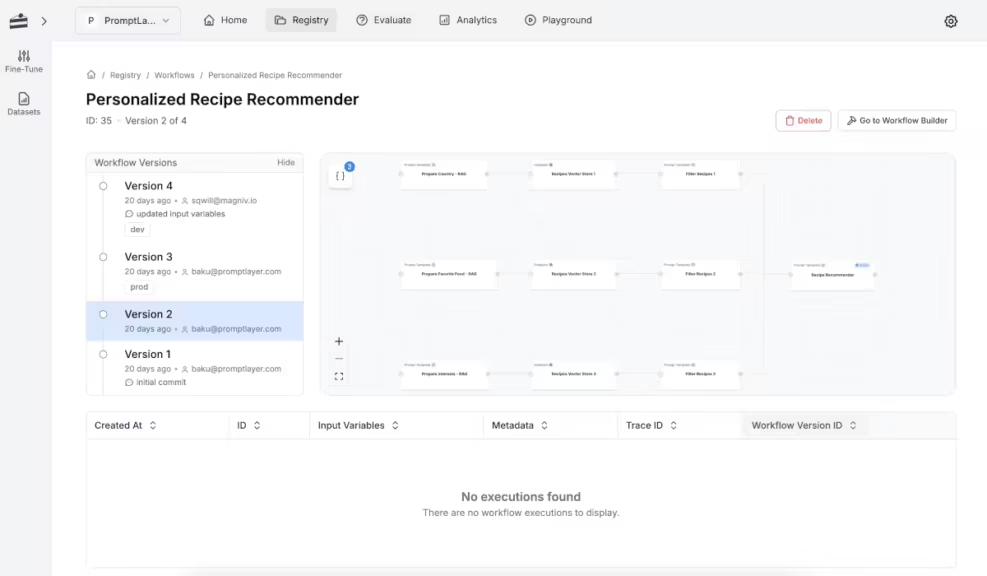
PromptLayer positions itself as the enterprise-level AI prompt management platform. According to their official documentation, it provides:
Strengths:
- Advanced version control with full history, branching, and rollback
- Team workspaces with fine-grained permissions
- Integrated A/B testing to compare multiple versions automatically
- Detailed analytics: cost per prompt, latency, success rates, tokens used
- Multi-model support including ChatGPT, Claude, Gemini, and open source models
- Dev/staging/prod deployment environments
- Strong security: SOC 2 compliance, audit trails, RBAC
Limitations:
- High price (starting at $50/user/month)
- Steep learning curve to master all features
- Overkill for individuals or small teams
Best suited for: teams of 10+ people, regulated environments, enterprises with larger budgets
PromptHub: the GitHub of AI prompts
PromptHub takes a Git-inspired approach. Their prompt generator and native version control are especially appealing to developers.
Strengths:
- Git-style versioning with commits, merges, branches
- Automatic prompt improvement via AI optimization
- Automated evaluation for output quality and consistency
- Public prompt sharing and template discovery
- Side-by-side testing of prompt variants
- Enterprise integration with SSO/SAML, SOC 2 in progress
Limitations:
- Technical interface can be overwhelming for non-developers
- Community features still under development
- Free plan restricted to public prompts
Best suited for: technical teams, developers used to Git workflows, open source projects
OpenPrompt: accessible open source AI prompt tool
OpenPrompt and its GitHub repo offer an open source alternative for AI prompt organization without vendor lock-in.
Strengths:
- 100% free and open source, no black box
- Unified interface for multiple models (ChatGPT, Hugging Face, etc.)
- Template library with reusable prompts
- Flexible customization for specific needs
- Active community with contributions and plugins
Limitations:
- Limited collaboration compared to commercial platforms
- Basic analytics, no advanced A/B testing
- Requires self-hosting or modest paid plan ($4–16/month)
- Fewer enterprise features
Best suited for: open source developers, small technical teams, side projects
LangChain + LangSmith: from framework to graphical interface
LangChain remains the reference framework for building complex AI applications, but with LangSmith, it has introduced a powerful graphical interface for prompt management.
LangChain (Framework):
- Complex workflows with prompt chaining, conditional logic, and loops
- Advanced memory and long-context handling
- Hundreds of data source and API integrations
- Reusable prompt templates
- LangGraph for advanced agent orchestration
LangSmith (Management interface): As highlighted by Mirascope and the official LangChain blog, LangSmith brings visual design and professional prompt testing to the LangChain ecosystem:
- Prompt Canvas: visual editor with integrated LLM assistant
- Interactive Playground: build, edit, and test prompts graphically
- Built-in versioning: complete history with rollback
- Evaluation and testing: measure prompt performance and output quality
- SDK integration: seamless deployment from UI to code
- Team collaboration: share and review prompts visually
This evolution makes LangChain + LangSmith a full solution: coding power plus modern UI accessibility.
✅ Strengths combined:
- Most powerful framework for complex workflows
- Graphical interface lowers the technical barrier
- Complete ecosystem (LangSmith, LangServe, LangGraph)
- Large community and extensive documentation
- Analytics integration via Langfuse
Limitations:
- Moderate learning curve (less steep thanks to LangSmith)
- LangSmith requires payment beyond free developer plan
- Still requires understanding LangChain concepts for advanced use
Best suited for: developers and technical teams building production AI apps, chatbots, or agents. Also suitable for prompt engineers thanks to LangSmith.
LangSmith: the modern interface for prompt management
LangSmith deserves its own section because it transforms the AI prompt management experience within the LangChain ecosystem.
Key features:
- Prompt Canvas: an intelligent visual editor to build complex templates, with an integrated LLM assistant suggesting improvements, formatting, and syntax validation.
- Interactive Playground: test prompts in real time with models like ChatGPT, Claude, Gemini, adjust parameters (temperature, tokens) and see results instantly.
- Automatic versioning: every modification creates a new version, with performance comparison and rollback options, including full edit history.
- Systematic evaluation: define quality metrics such as accuracy, tone, relevance, then let LangSmith auto-evaluate outputs.
- SDK integration: once validated, deploy your prompt into production with just a few lines of code in Python or JavaScript. Updates made in the UI propagate directly to code.
- Team collaboration: share prompts, review changes, manage granular permissions.
Strengths:
- Lowers the technical barrier for LangChain prompt design
- Full professional workflow: dev → test → staging → production
- Detailed analytics: costs, latency, error rates per prompt
- Native integration with Langfuse
Pricing:
- Free developer plan with limited usage
- Plus: $39/month for professional use
- Team: $99/month/member for advanced collaboration
- Enterprise: custom quote with SOC 2 and dedicated support
Best suited for: development teams already using LangChain, or organizations that want a complete framework + UI solution for advanced AI applications.
Why LangSmith changes the game: Before LangSmith, prompt management in LangChain required coding everything manually in Python, handling versioning with Git, and writing custom test scripts. Now the workflow is:
- Design visually with Prompt Canvas
- Test in the Playground across multiple LLMs
- Compare versions automatically with metrics
- Deploy in one click via SDK
- Monitor usage, performance, and costs
This shift makes LangChain + LangSmith competitive with PromptLayer and PromptHub in terms of accessibility while keeping LangChain’s unmatched technical depth. It is now a leading choice for developers.
Agenta: open source with A/B testing
Agenta combines the best of both worlds: open source flexibility with advanced features.
Strengths:
- Strong versioning system
- Side-by-side comparison of outputs
- Multi-LLM testing with ChatGPT, Claude, Mistral, and others
- Visual interface, no coding required
- Self-hosted option for full control and privacy
Limitations:
- Less mature than PromptLayer
- Smaller community
- Documentation can be incomplete
Best suited for: technical teams preferring open source, or organizations with confidentiality requirements.
ChainForge: visual workflows for prompt engineers
ChainForge on GitHub provides a visual node-based interface for chaining and comparing prompts.
Strengths:
- Drag-and-drop node-based workflows
- Immediate visual comparison of outputs
- Chained prompts where one output feeds the next
- Free and open source
- Can run locally without API
Limitations:
- Less suited for managing large prompt libraries
- No advanced analytics or enterprise collaboration
- Focus on experimentation more than production
- No API integration
Best suited for: researchers, prompt engineers experimenting with workflows, prototyping complex ideas.
General-purpose tools: Notion, Obsidian, VS Code
We have covered these tools in detail in dedicated guides:
Notion (see full guide):
- ✅ Accessible, collaborative, flexible databases
- ❌ Weak version control, no execution, free plan limitations
- Best suited for: freelancers, content creators, non-technical teams
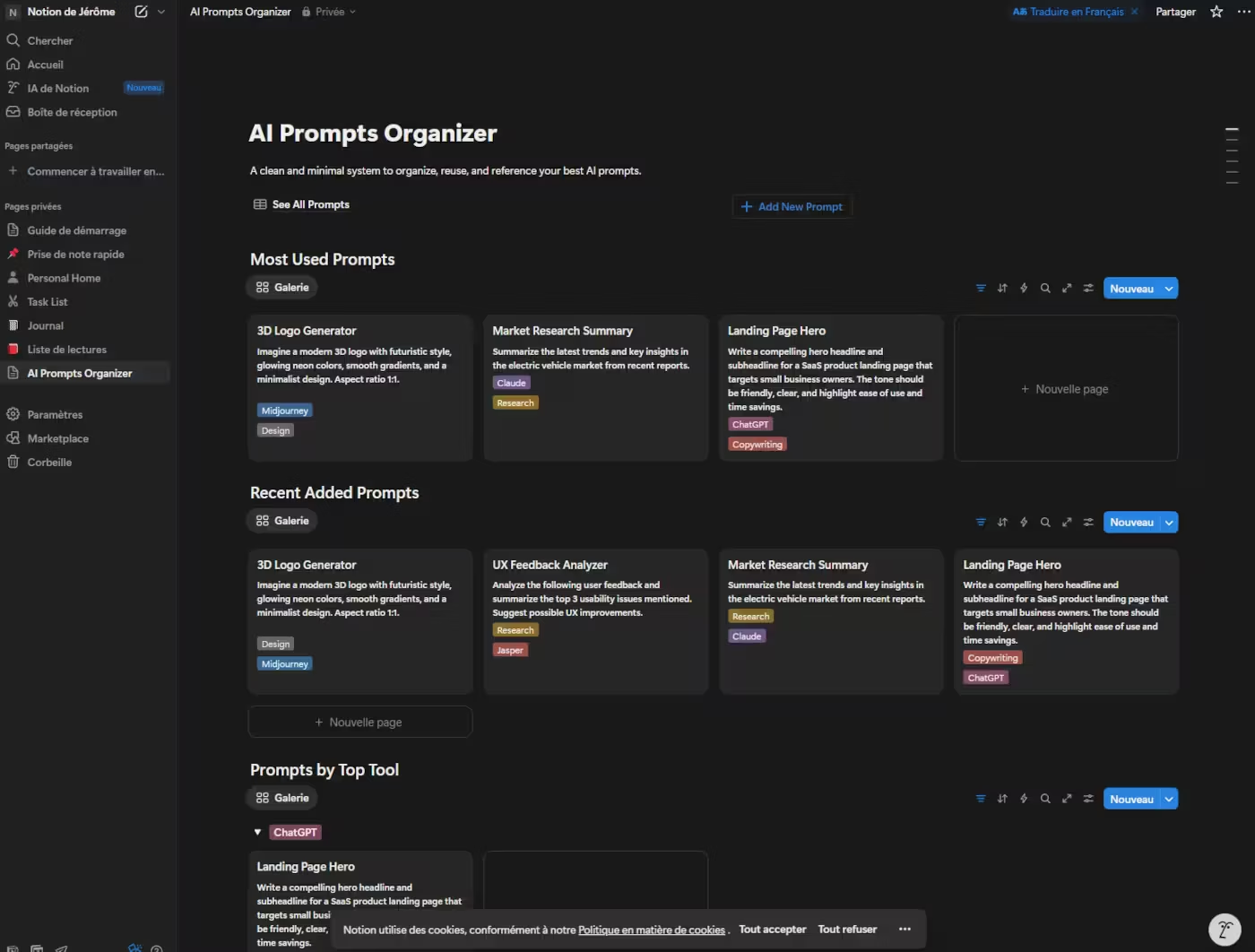
Obsidian + Templater (see full guide):
- ✅ Local-first, Markdown-based, extensible, Git-friendly
- ❌ Learning curve, no native execution, limited collaboration
- Best suited for: advanced users, privacy-conscious workflows
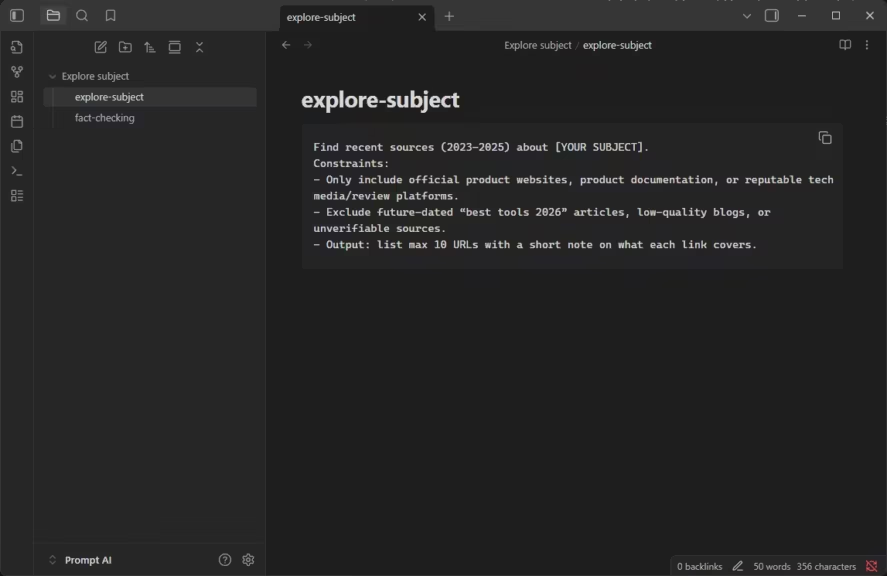
VS Code + Snippets/Prompty (see full guide):
- ✅ Integrated with dev workflows, powerful snippets, free
- ❌ Technical, no analytics, manual execution unless extensions are added
- Best suited for: developers working inside VS Code daily
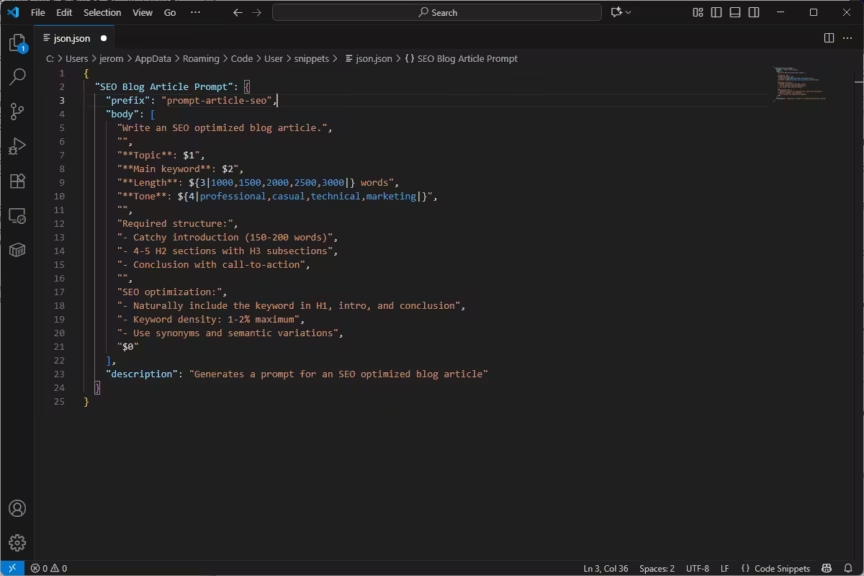
Complementary and niche tools
- Everprompt: commercial AI prompt tool with automated classification, variable templates, and scalable libraries.
- PromptSmith: community project on Reddit for local prompt management.
- Latitude: open source project on GitHub, prompt management and workflows with an interface, still early stage.
- PromptFlow: low-code workflow tool for composing prompts with variables and conditional logic.
- PromptSource: academic open source IDE for prompt templates, more research-oriented.
For deeper learning, check the LangChain tutorials and the prompt landscape overview.
Pricing models and economic structures
The main pricing strategies
Understanding the pricing models of AI prompt management tools is essential to plan your budget. Three main strategies dominate the market:
1. Freemium with limitations A functional free plan, but limited in requests, users, or storage. Upgrading unlocks the full features. Examples: PromptHub, OpenPrompt, Notion
2. Usage-based pricing Billing depends on actual usage, measured in API requests, tokens consumed, or prompts executed. Examples: PromptLayer, some PromptHub plans
3. Per-seat pricing A fixed price per user/month, giving full access to all features from the start. Examples: PromptLayer Pro, enterprise SaaS tiers
4. Open source + paid support Software itself is free, but professional support and managed hosting are available for a fee. Examples: LangChain (via LangSmith), Agenta, ChainForge
2025 price comparison table
| Tool | Free Plan | Individual Plan | Team Plan | Enterprise Plan |
|---|---|---|---|---|
| PromptLayer | 5000 req/month, logs 7d | – | $50/user/month with 100k requests | Custom, unlimited requests |
| PromptHub | Unlimited public prompts, 2000 req/month | – | from 10k req/month | Custom with SSO, SOC 2 |
| OpenPrompt | 2000 req/month | $4/month | $8/month (5k req), $16/month (10k req) | – |
| LangChain | Free framework | – | – | – |
| LangSmith | Free dev plan with limits | $39/month standard | $99/month/member advanced | Custom enterprise features |
| Agenta | Free open source | Free self-hosted | Managed cloud: custom | Enterprise custom |
| ChainForge | Completely free | – | – | – |
| Notion | Free solo, 1000 blocks for teams | – | $8/user/month | $15/user/month |
| Obsidian | Free personal use | – | Sync: $8/month, Publish: $16/month | – |
| VS Code | Fully free | – | – | – |
Hidden costs to keep in mind:
- LLM APIs: OpenAI, Anthropic, and others charge per usage ($0.01–$0.06 per 1k tokens).
- Self-hosting: server infrastructure, maintenance, and backups if you manage it yourself.
- Setup time: configuration, onboarding, migration of existing prompt libraries.
Example scenario – SME of 10 people using PromptLayer intensively:
- PromptLayer Pro: $500/month (10 users)
- OpenAI APIs: $300–500/month
- Total: $800–1000/month
Alternative – Obsidian + VS Code open source:
- Tools: $0/month
- OpenAI APIs: $300–500/month
- Maintenance/dev time: ~4h/month (~$400 equivalent)
- Total: $700–900/month
Real cost depends on available skills, internal resources, and how you value developer time.
Cost-benefit by user profile
Freelancer (1 person, moderate use)
- Budget option: Notion free or Obsidian → $0–4/month
- Premium option: PromptHub free with upgrade → $0–20/month
- Recommendation: start with free, upgrade only if limits become blocking
Small technical team (3–5 developers)
- Budget option: VS Code + Git + self-hosted open source → $0/month tools
- Balanced option: OpenPrompt paid plan → $24–40/month team
- Premium option: PromptHub or PromptLayer → $150–250/month
- Recommendation: open source self-hosted if skills are available, otherwise OpenPrompt
Marketing/content team (5–10 non-technical users)
- Budget option: Notion team → $80–100/month
- Balanced option: PromptHub → $200–300/month
- Recommendation: Notion for ease of use, PromptHub if analytics are needed
Enterprise (20–100+ users)
- Option: PromptLayer or PromptHub Enterprise → $1000–5000/month
- Considerations: SOC 2, SSO, dedicated support, SLA guarantees
- Recommendation: choose proven enterprise-grade solution
Which tool for which user profile?
Decision matrix by profile and needs
Choosing the best AI prompt management tool depends less on the tool itself than on your context. Here’s a clear orientation guide.
Profile 1: Freelancer or solo user
Needs:
- Simple personal organization
- Quick access to favorite prompts
- No complex collaboration
- Minimal or no budget
Recommended solutions:
🥇 Notion free → see detailed guide
- Easy-to-use interface, no setup required
- Flexible database with tags and multiple views
- Free with no limit for solo use
- ⚠️ History limited to 7 days
🥈 Obsidian + Templater → see detailed guide
- Local storage with full privacy
- Free forever, extensible with plugins
- Markdown-based, Git versioning
- ⚠️ Medium learning curve
🥉 PromptHub free
- Professional-grade features in limited mode
- Access to public prompt libraries
- ⚠️ Limited to 2000 requests/month
To avoid: PromptLayer (too expensive), LangChain (too technical), enterprise SaaS
Profile 2: Small non-technical team (2–10 people)
Needs:
- Real-time collaboration
- User-friendly interface
- No dev skills required
- Reasonable budget
Recommended solutions:
🥇 Notion team → see detailed guide
- Smooth real-time collaboration
- No technical knowledge needed
- Affordable ($80/month for 10 users)
- ⚠️ No analytics or A/B testing
🥈 PromptHub
- Modern interface with analytics
- Automatic prompt optimization
- Community features
- ⚠️ More technical than Notion, higher cost
🥉 Everprompt
- Automatic AI classification
- Easy to use
- ⚠️ Less known, fewer user reviews
To avoid: VS Code (too technical), self-hosted setups (complex to maintain)
Profile 3: Developers and technical teams
Needs:
- Integration with existing development workflows
- Variables, templating, automation
- Robust version control (Git)
- API access for app integration
- Complex workflows and prompt chaining
Recommended solutions:
🥇 LangChain + LangSmith
- Most powerful framework for complex workflows
- Modern UI with Prompt Canvas and Playground
- Built-in versioning, testing, and evaluation
- Complete ecosystem (LangGraph, LangServe, Langfuse)
- Free developer plan, then $39/month for pro use
- ⚠️ Requires learning curve to master
LangSmith is now the reference for building production-ready AI applications with LangChain.
🥈 VS Code + Prompty → see detailed guide
- Fully integrated into dev workflow
- Powerful snippets and Jinja templating via Prompty
- Free with native Git support
- Extensions available (Prompty, AI Toolkit, Prompt Flow)
- ⚠️ Less suited for very complex workflows
🥉 Agenta
- Open source with robust A/B testing
- Self-hosted or managed cloud option
- Visual interface plus API support
- Multi-LLM by design
- ⚠️ Smaller community, younger project
Alternative: Obsidian + Git → see guide for advanced Markdown-based workflows with versioning.
To avoid: Notion (too limited for dev use), tools without API access, or SaaS platforms with no workflow flexibility.
Profile 4: Mid-sized teams (10–50 users)
Needs:
- Structured collaboration
- Permission management (who can edit, who can view)
- Usage metrics and analytics
- Professional support
Recommended solutions:
🥇 PromptHub
- Git-style versioning for governance
- Strong collaboration and prompt reviews
- Comprehensive analytics and A/B testing
- Flexible pricing that scales with usage
🥈 PromptLayer
- Full enterprise feature set
- Project-based workspaces with permissions
- Advanced analytics (costs, latency, performance)
- ⚠️ Higher price ($500/month for 10 users)
🥉 OpenPrompt + support
- Open source, customizable
- Cheaper than SaaS solutions
- ⚠️ Support depends on community and external providers
Mixed setups: some companies combine Notion for marketing teams and VS Code or LangChain for developer teams.
Profile 5: Large enterprises (50–500+ users)
Needs:
- Compliance and security (SOC 2, ISO 27001)
- SSO/SAML, audit trails, governance
- Dedicated support and SLA guarantees
- Scalable performance for production workloads
- Training and onboarding
Recommended solutions:
🥇 PromptLayer Enterprise
- SOC 2 compliant with full audit features
- Granular RBAC and isolated workspaces
- Dedicated support with SLA contracts
- Dev/staging/prod deployment environments
- ⚠️ High cost but justified for compliance-critical contexts
🥈 PromptHub Enterprise
- Git-based versioning with enterprise features
- SSO/SAML and SOC 2 in progress
- Analytics and team governance
- ⚠️ Slightly less mature than PromptLayer on certifications
🥉 Self-hosted open source (LangChain/Agenta) with internal team
- Full control with custom compliance setup
- No vendor lock-in
- Predictable infrastructure cost
- ⚠️ Requires internal team for maintenance and scaling
To avoid: SaaS tools without compliance guarantees, or general-purpose apps for critical enterprise needs.
Specific use cases
Researchers and academics:
- ChainForge for experimental visual workflows
- PromptSource for reproducible research
- Obsidian for structured note-taking
Agencies and consultants:
- Notion for collaboration with clients
- PromptHub for proprietary prompt libraries
- VS Code for technical team workflows
High-growth startups:
- Start with VS Code/Obsidian (free, flexible)
- Scale with PromptHub or OpenPrompt for balance
- Move to PromptLayer after raising funds and scaling operations
Conclusion: building your ideal prompt management stack
Choosing the best AI prompt management tool is not a binary decision. The optimal approach often combines several solutions depending on team size and use cases.
Recommended hybrid architecture
For a 30–50 person company with multiple teams:
Marketing/Content (10 people)
- Notion for collaborative access
- Read-only access to PromptHub for prompt reuse
Development (15 people)
- VS Code + Prompty for daily dev workflows
- LangChain + LangSmith for production AI apps
- PromptHub for cross-team versioning and sharing
Data/ML (5 people)
- Obsidian + Git for research and experimentation
- ChainForge for prototyping workflows
- Agenta for A/B testing across LLMs
Management/C-level (5 people)
- Read-only Notion for overview
- PromptHub dashboards for analytics
This hybrid model optimizes cost, adoption, and efficiency. Invest in paid solutions for analytics and mission-critical collaboration, and rely on open source for flexibility and cost control.
Your recommended onboarding path
Week 1: Free exploration
- Test Notion with 5–10 core prompts → Notion guide
- Install Obsidian and try Templater → Obsidian guide
- Create snippets in VS Code if you are a developer → VS Code guide
Weeks 2–3: Identify needs
- Which tool feels most natural?
- Where do you face limitations?
- Do you need analytics, A/B testing, advanced collaboration?
Month 2: Decision and rollout
- If free tools are enough → keep and optimize your setup
- If limitations block you → trial PromptHub or PromptLayer
- If you have a technical team → evaluate Agenta or LangChain self-hosted
Month 3+: Continuous optimization
- Measure ROI: time saved, prompt quality, team adoption
- Adjust based on feedback
- Document internal best practices
Resources to explore further
Guides in this series:
- Organize AI prompts: complete guide to solutions in 2025
- Best practices for managing an AI prompt library
- Organize AI prompts with Notion
- Organize AI prompts with Obsidian and Templater
- Organize AI prompts with VS Code
Communities and external resources:
- r/PromptEngineering on Reddit for discussions and discoveries
- Latitude Blog for prompt engineering tool news
- Official documentation of each platform
- GitHub Topics: prompt-engineering, llm-tools
The AI prompt management market is evolving fast. New players appear regularly, and existing ones improve rapidly. Stay curious, test continuously, and iterate. The perfect tool today might be outdated in six months. The key is to structure your prompts now instead of waiting for the ideal tool. Start simple, grow progressively, and your prompt library will become a strategic asset for your AI productivity.
Your comments enrich our articles, so don’t hesitate to share your thoughts! Sharing on social media helps us a lot. Thank you for your support!


